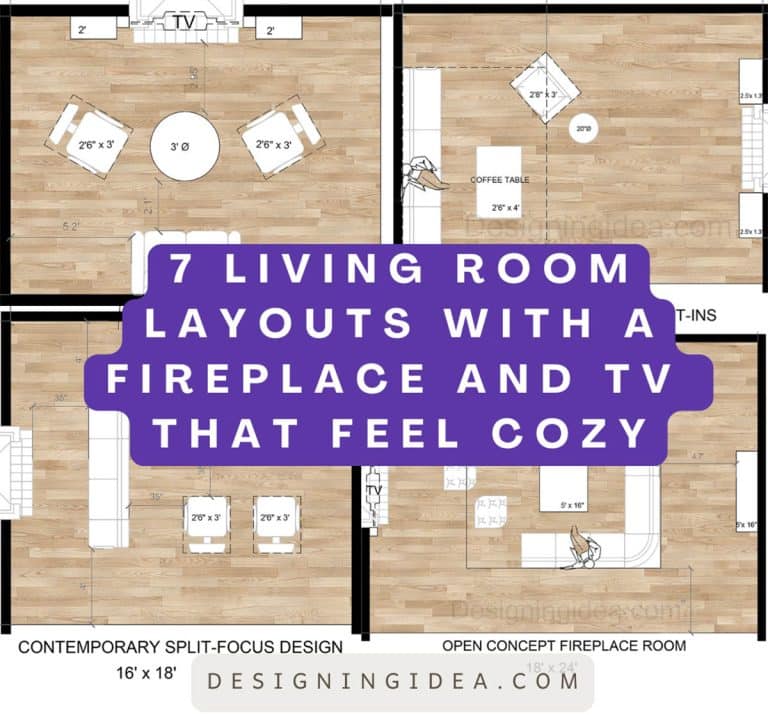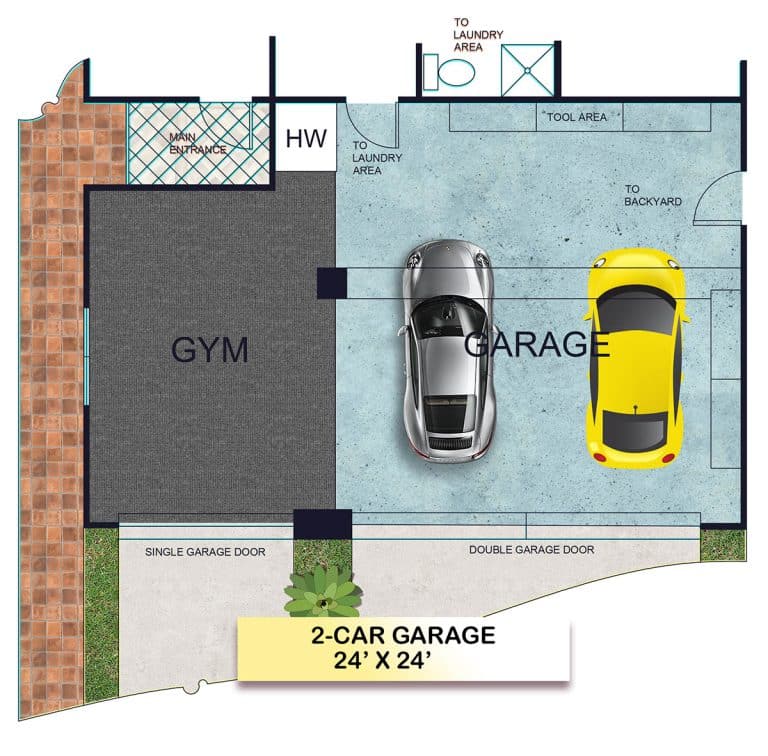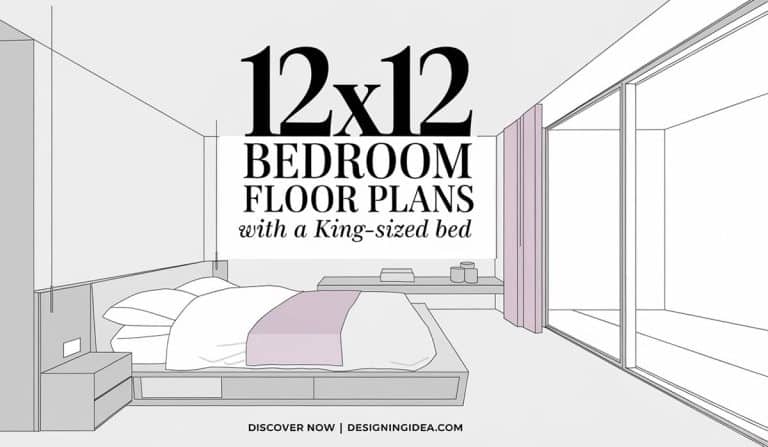See The 11 Best Bar Layout Ideas To Enhance Your Home Design
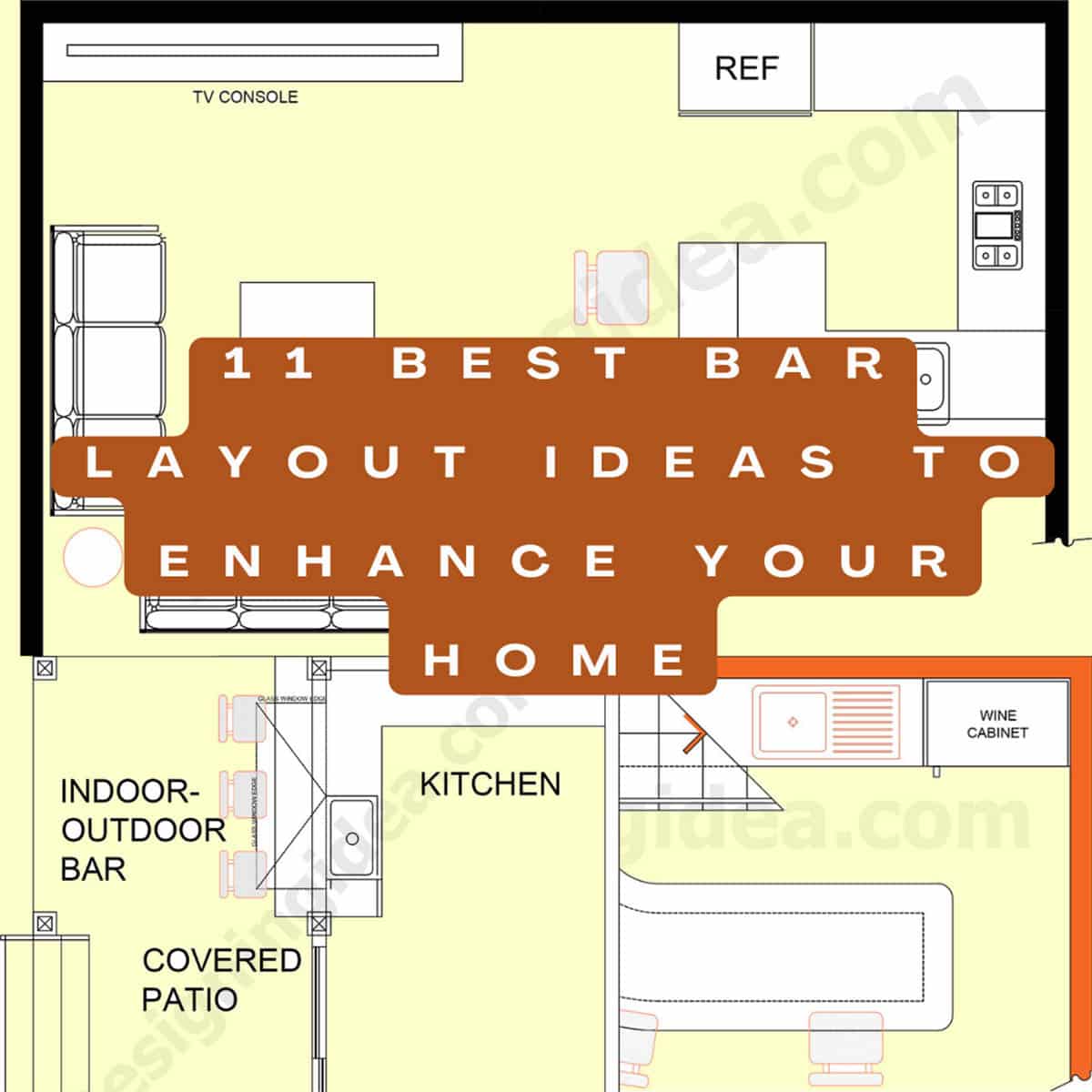
One of the hallmarks of entertainment and luxury living in a home is having your own home bar. Typically, near your kitchen or if you have a game room, the perfect complement to your entertainment hub. The outdoor pool or garden are also perfect places to add a home bar. In this article, we’ll learn more about home bar layout ideas, from the classic linear bar to your commercial hexagonal layout, to give you an idea for your exciting projects in the future.
Bar Dimensions to Remember:
- Height: Typically, between 36 and 42 inches (91.4 to 106.7 cm).
- Width: Varies depending on the size of your kitchen and desired functionality. A common width is around 36 inches (91.4 cm).
- Depth: Typically, between 24 and 30 inches (61 to 76.2 cm).
Island Bar
A versatile bar layout that works well as a focal point in any kitchen space.
Compact and easily oriented in any space in a kitchen, living room, or any social space, the island bar is a flexible layout for almost any floor area. The island bar can either be freestanding or some of its segments attached to a wall. The general layout can be circular or rectangular, but a round or curved bar counter encourages social interaction. The 360-degree view with a bar backdrop is a popular option for commercial spaces as well as in more expansive residential settings since it becomes the focal point of the room.
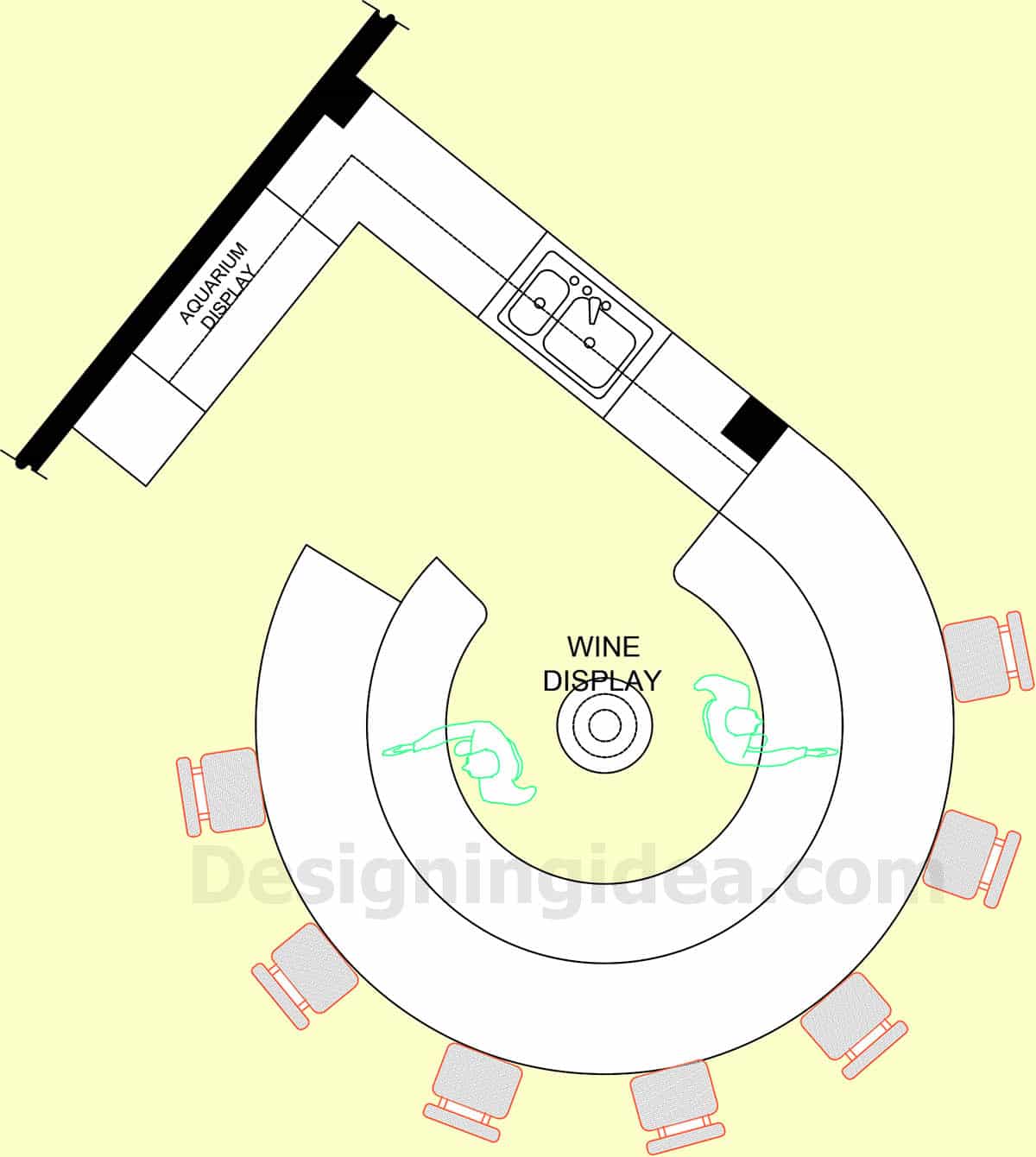
Seating Capacity: Each seat requires about 24 inches of space.
Features:
-
- Creates an extension for food service as well as in preparation and dining.
- The almost 360-degree seating encourages conversation.
- Easy and fast service of food and beverages.
- It can become a focal point in a room.
- Option for mobile or moveable island bars.
Limitations:
-
- The need for a skilled and knowledgeable builder, especially for round or circular layouts.
- The need for flexible materials and equipment is needed when creating a curved bar.
- Additional lighting and plumbing layout.
- Need to add a back bar, especially when counter service is located in the middle of the room.
L-shaped Bar
The L-shape plan is the go-to layout for filling in corner areas, but it is versatile and can be used as an extension of a kitchen service or a stand-alone feature in a room.
The L-shape design is characterized by having a 90-degree angle where the corner counter can either have similar or dissimilar lengths depending on the desired design or availability of space.
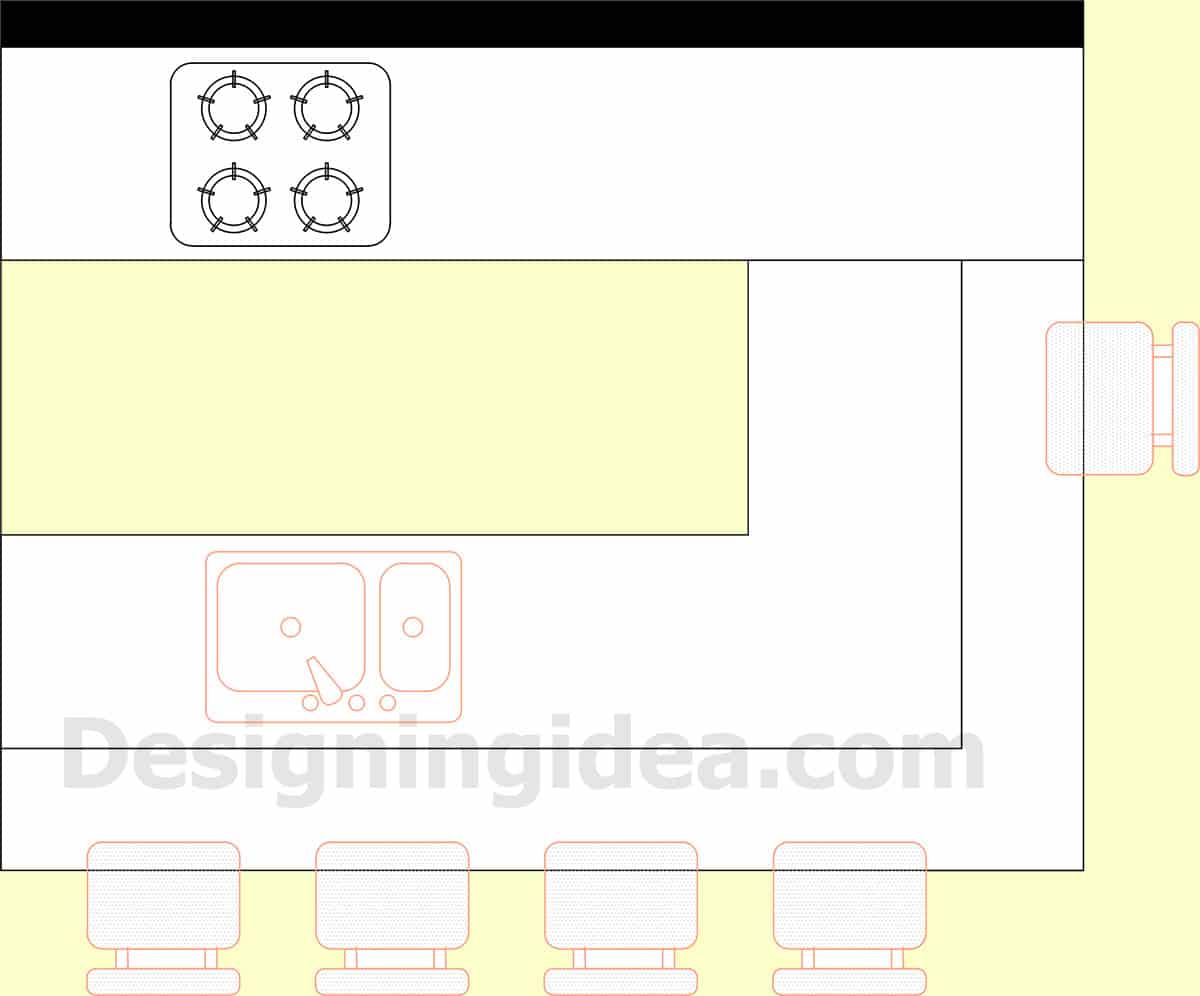
Seating Capacity: Each seat typically requires about 24 inches (2 feet) of space.
Features:
-
- The L-shaped work triangle formula for kitchen efficiency.
- Adaptable for any corner length and orientation.
- In a commercial setting, it can focus on security in one opening.
- The short leg of the L-shape layout is usually assigned as your return leg.
- Does not need a large space.
- Can fit into different room conditions, especially for open plans with limited space.
- Two users can face each other and create an intimate conversation.
Challenges:
-
- The working area can feel cramped when not properly planned.
U-shaped Horseshoe Bar
Popular for larger spaces and suitable for traditional themed home bars, the horseshoe bar, or U-shaped bar, is characterized by curved seats that give a welcoming vibe.
The smallest possible square footage for a horseshoe bar can come in 40 to 60 square feet with its basic features. For a more functional horseshoe bar, the area can come from 150-200 square feet. This is a compact bar area that includes a room for seating and movement around the bar.

Seating Capacity:
Small Horseshoe Design 6 to 8 feet: 6 to 8 seats
Large Horseshoe Design 10 to 12 feet: 12 to 16 seats
Features:
- The bar is the focal point in the room, especially when integrated with a wine display backdrop.
- The semicircular layout of seats encourages conversation.
- Two or more servers can fit into the countertop aisle.
- Convergence of seats to the bar service area makes distributing food and drinks convenient.
- More seating options.
- Larger capacity of users.
- The U-shape allows users a good peripheral view of the space.
- Users seated on the curved corner can face each other for conversation.
Limitations
-
- It requires a larger space, which makes it not the most practical bar layout for domestic use. However, larger residences can benefit from the expansive bar layout.
- Possible for residential settings but can take more space, making it less efficient than your typical straight, L-shaped, or circular layout.
Linear Bar
A straightforward and classic design that can accommodate smaller and narrow spaces is the linear bar.
The linear plan is also termed a straight bar, the design is easier and less costly to build compared to other layouts.

Seating Capacity:
Short Bar (4-6 feet): Can accommodate about 2-3 seats.
Medium Bar (8-10 feet): Can accommodate about 4-5 seats.
Long Bar (12 feet or more): Can accommodate about 6-8 seats.
Features:
- Distinct with its straight counter that works well with modern and minimalist themes.
- Straightforward design that can showcase exotic surface materials like edge wood grain, stone or man-made options.
- The best layout to showcase your wine collection is as you can create a backdrop on the wall facing your guests.
- It can be a foundation layout to start on for future expansion, such as an L or U-shaped counter.
- Waterfall edge countertop designs are a popular option that offers a minimalist and modern design.
- Since you don’t have corners, there are no seams, which means you get a cleaner, more hygienic surface.
Challenges:
- Harder to command visual attention compared to other bar layouts.
- Limited seats.
- Doesn’t encourage much interaction among the seating guests.
Tiered Bar
A tiered design offers multiple levels or tiers of countertops, each at different heights.
The multi-level counter provides a more customized experience and creates a dynamic look. Typically, with two levels, one lower, which is the standard height of 30 inches. This is used for dining or breakfast nooks, while a height of 42 inches is used for the bar counter.
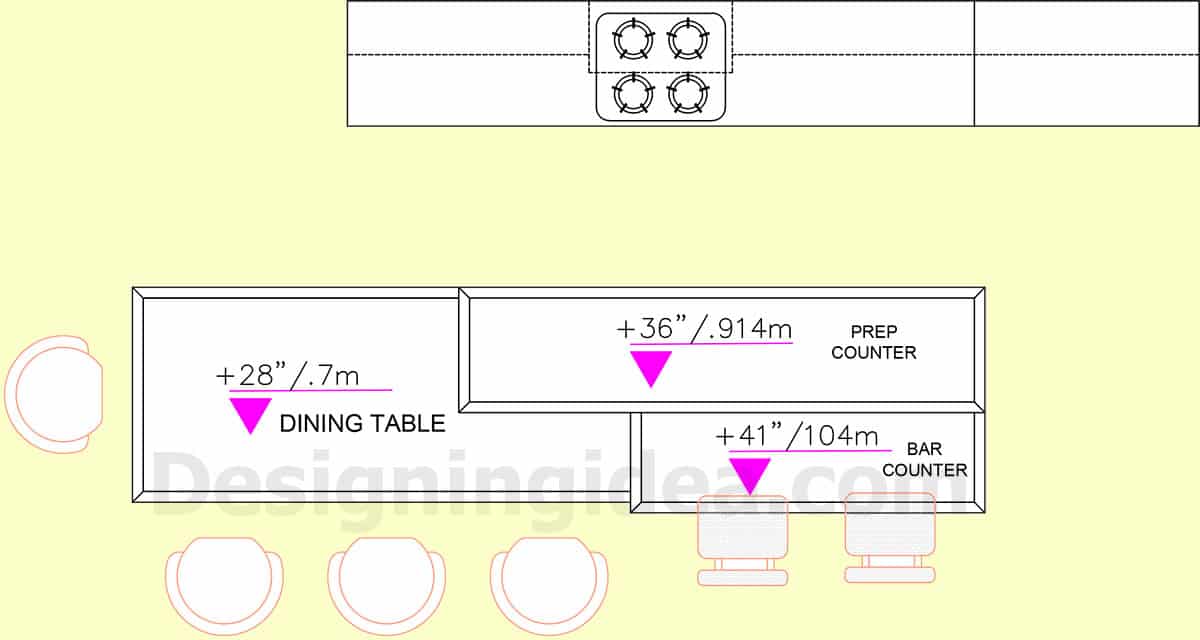
Seating Capacity:
Lower Tier:Length: 8 feet
Width: 2 feet
Seating Capacity: 8 feet / 2 feet per seat = 4 seats
Upper Tier:Length: 6 feet
Width: 2 feet
Seating Capacity: 6 feet / 2 feet per seat = 3 seats
Features:
-
- Well-defined areas. The different levels mean it caters to different functions.
- Opportunity to create an ergonomically designed bar workstation since levels or counter heights can be adjusted according to comfort and recommended counter heights.
- When properly planned, can utilize space in both horizontal and vertical areas.
- Create a visually rich bar counter that upgrades the look of a room.
- To distinguish levels, you can use different materials on each level, which creates a stylish and attractive finish.
- Subtle changes in levels can also be an option, or carving out an L-shape bar counter on one side to allocate patrons to this serving area.
- You can also create a two-tier bar from a peninsula layout to increase the service surface in a small room.
Challenges
-
- Maintenance and cleaning may be more challenging since there are changes in levels. The more folds, crevices, or corners are created, the more cleaning is needed in between levels.
- Additional labor and material costs when renovating or constructing a tiered bar station.
Modular Bar
Offers customization with the possibility of reconfiguration in the future that comes with different components for storage, preparation, seating, and serving.
Modular bars are often easier to install compared to custom-built bars. Many come with prefabricated components that can be assembled with minimal effort.
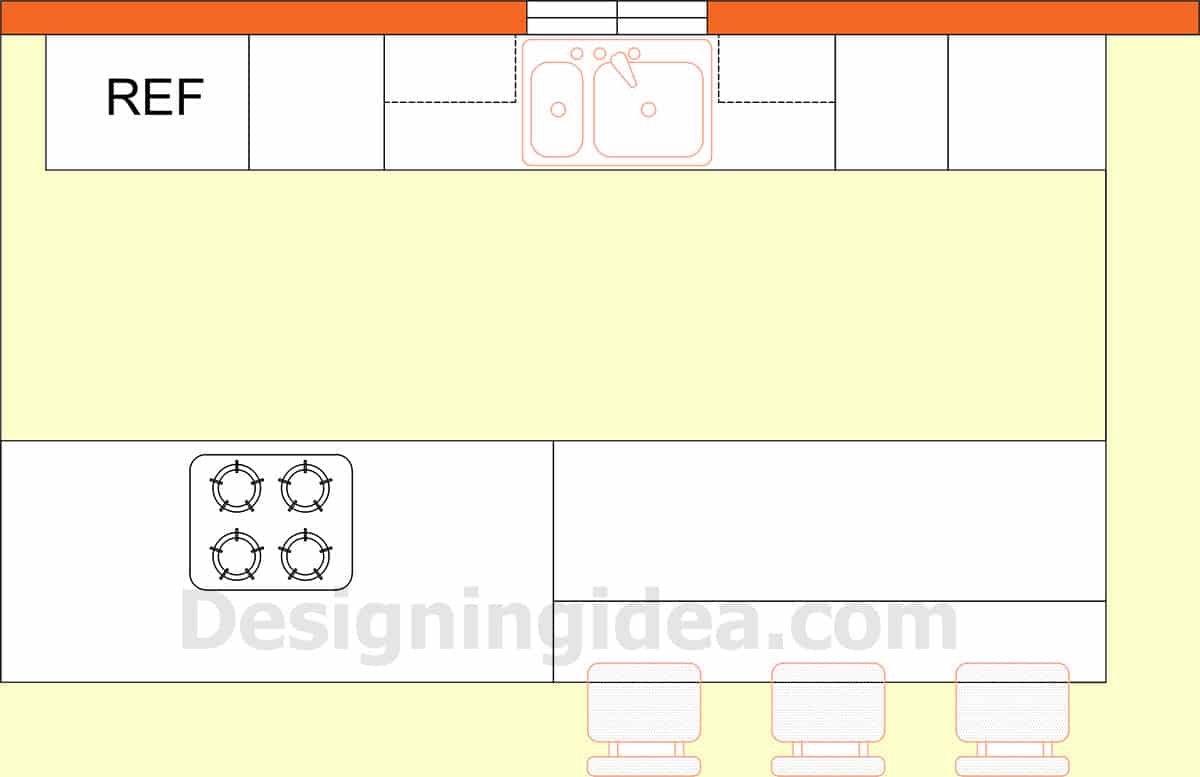
Seating Capacity:
Single Module (4 feet): 2 seats.
Multiple modules (e.g., 3 modules): 6 seats in a straight line or 4 seats in an L shape.
Features:
-
- Like any modular furniture, this means that you have modular components that can be reconfigured to produce a different layout.
- Adaptable to almost any floor space.
- DIY installation is possible depending on the type of modular bar brand and model.
- Easily dismantled and transported to another place.
- No material is wasted and can be replaced easily with available components.
Limitations:
- Fewer designs are available.
- Limited Customization.
- Outdated bar model products will have a hard time finding available components.
- Cheaper options that are mass-produced can come with inferior quality. The similarity in the design or the almost “copycat” components can be hard to spot for online clients.
- Proper planning is essential to make sure the modular bar fits well within your space and meets your functional needs.
Indoor-Outdoor Bar
Connects interior and exterior spaces, often featuring folding windows or garage-style doors; popular for spaces with patios.
This type of plan is designed to function across two areas, usually through large pass-through windows, sliding doors, or folding glass panoramic doors that open, creating a smooth transition between the interior and exterior spaces.
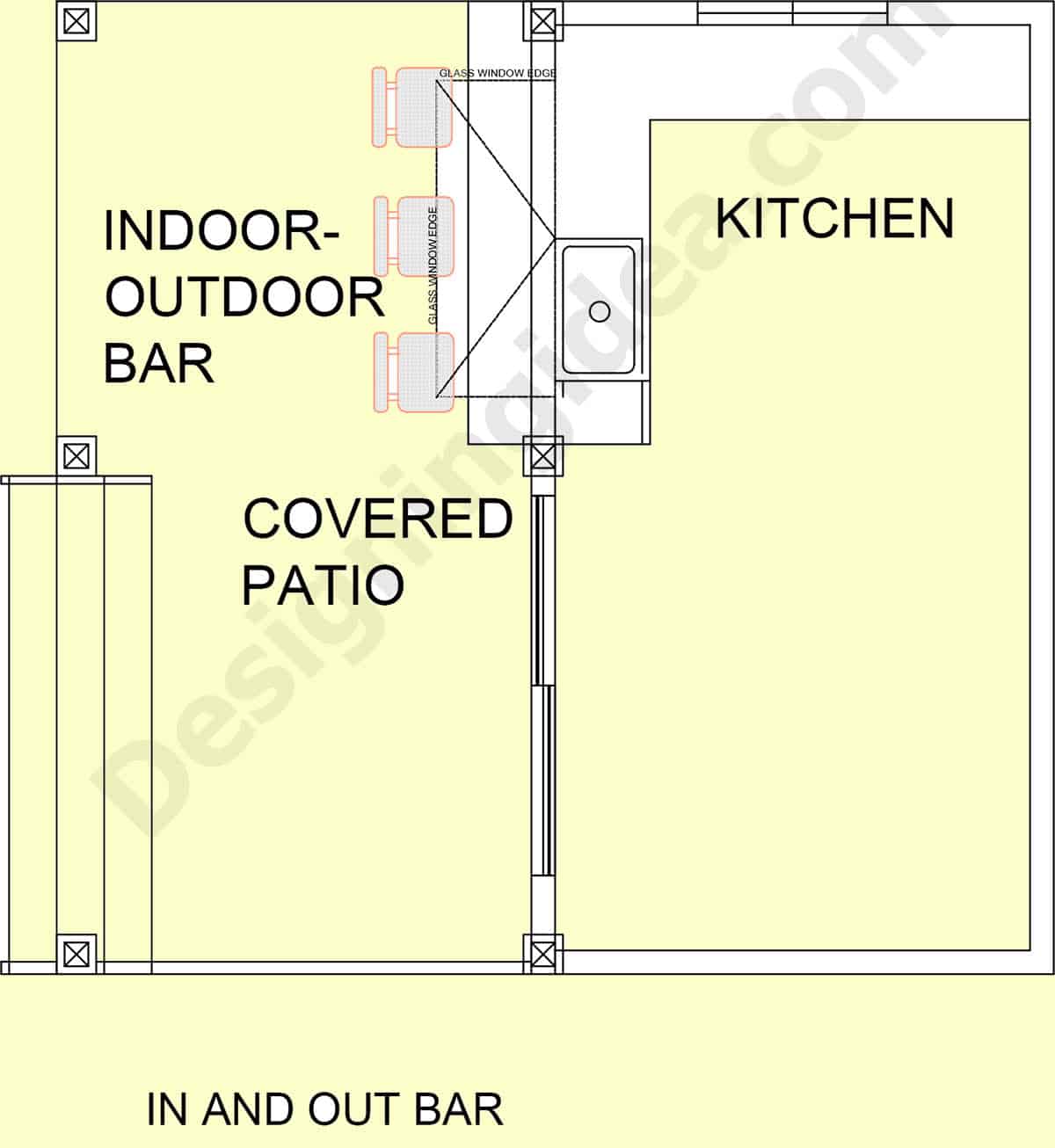
Seating Capacity:
Each seat typically requires about 24 inches (2 feet) of space.
Features:
- Extends entertainment service to the outdoors.
- Enhances the outdoor space by providing food and beverage service.
- Connects the indoors to the outdoors, creating a smooth transition between the two areas.
- Less expensive than installing a separate prep counter outdoors. The existing kitchen counter with its major functions can be used to serve the indoor-outdoor bar.
Limitations:
- The opening created by the window to give access between indoors and outdoors should be weatherproofed.
- The need to open the indoors to have service.
- Housing developments and local ordinances may impose limitations on building an indoor and outdoor bar area.
Curved Bar
A wavy or S-shaped design adds dynamic flow to the space, which can define different areas within larger rooms.
The curvature of the design can help soften the look, break up sharp angles, and make the space feel more inviting and visually appealing. The curved shape naturally positions people facing one another for easier conversation and to create a more intimate, and social living environment.
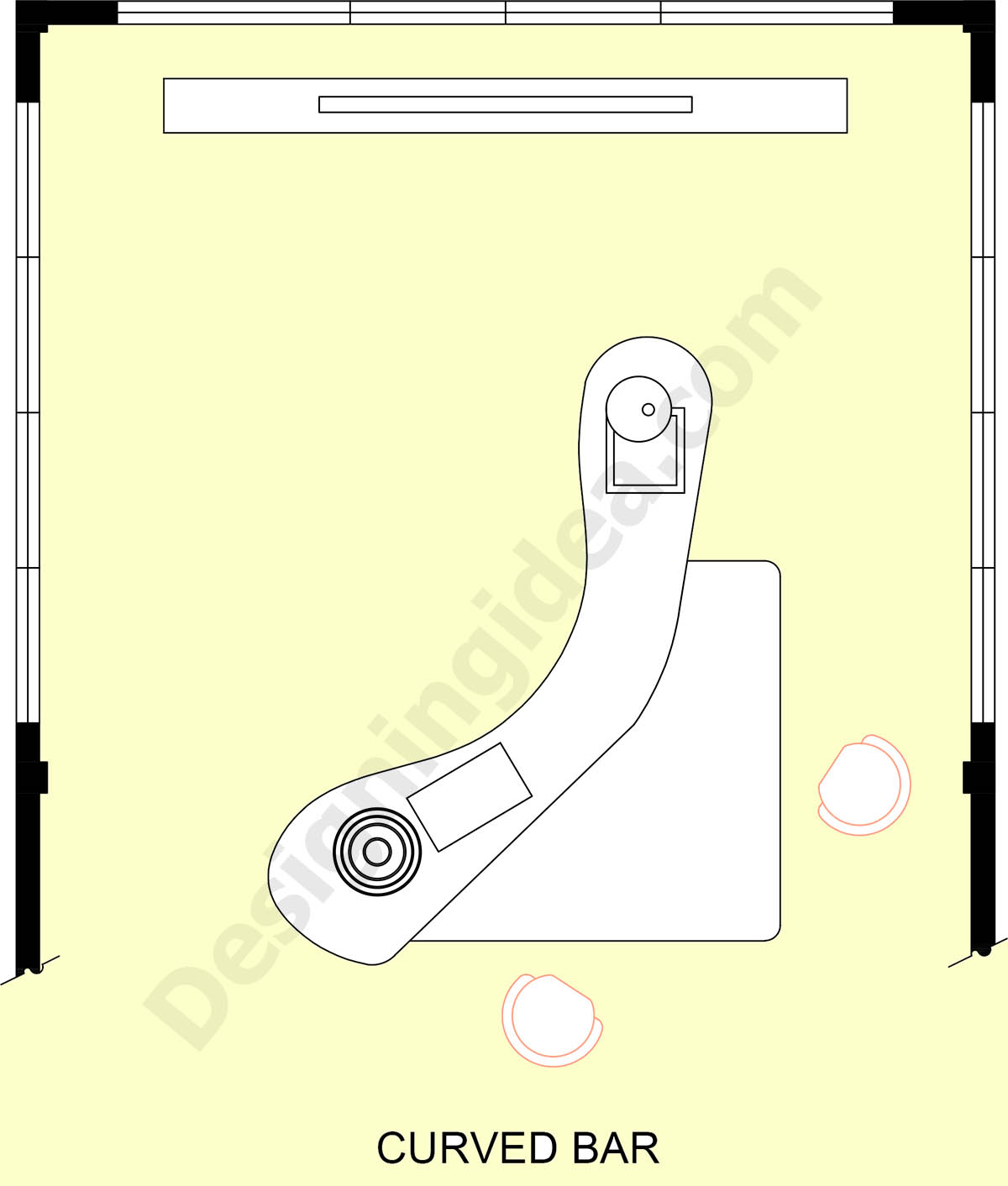
Seating Capacity:
For instance, a 12-foot curved bar has around 4-5 seats, depending on the curvature and design.
* The radius of the curve can impact how many seats can fit comfortably.
* A rough estimate is that a curved bar can accommodate about 75% of its total length for seating.
Features:
- The curved and arched geometry gives a sensual touch to modern homes.
- Encourage socialization while creating a compact and segmented space, which is effective in defining areas in an open-plan interior.
- Add a well-planned lighting effect, and it can be visually refreshing, especially for interiors that are mostly in straight-edged elements.
- Efficient layout since you get a curved geometry that allows a compact and smooth flow of fixtures.
Limitations:
- Complexity of installation with special craftsmanship for most materials, which can be expensive.
- Enough space is needed to achieve an efficient workspace.
Kitchen Island Bar
Extends from or replaces part of the kitchen island; dual-purpose: food prep and casual drinking spot; great for entertaining while cooking.
Using the island for serving drinks and socializing works well in open-concept designs that overlook the primary living area. this allows for friends and family to chat, and enjoy drinks while the host mixes drinks, serves appetizers, or prepares food.
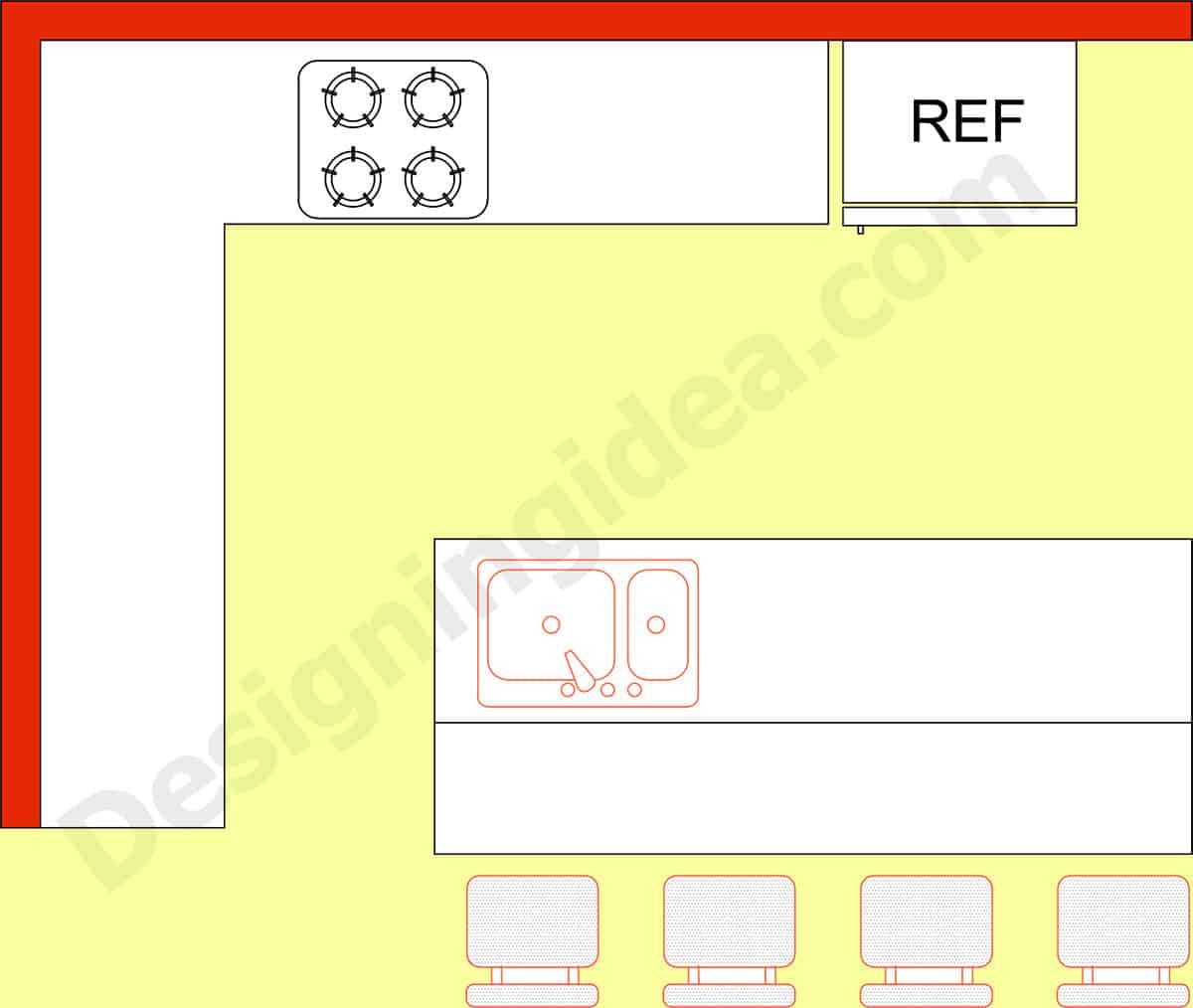
Seating Capacity: Each seat typically requires about 24 inches (2 feet) of space.
Features:
- Allows overflow of space between the kitchen and the bar area, saving space.
- Space utilization goes along with efficient hosting.
- Utilizes unused space that has been created due to a previous kitchen installation.
Limitations:
- Can feel cramped with small spaces.
- Since it is an extension of the kitchen, exclusive events for friends can disrupt food preparation for immediate occupants or users of the kitchen.
Under-Stairs Bar
Make use of an odd black space with the option of either the home bar being exposed or with the option to hide away from view when required.
Under the stairs, provide ample square footage for storage, a minibar, or a study area. As a bar, you can fit a small counter with a base cabinet and a straight-line counter.
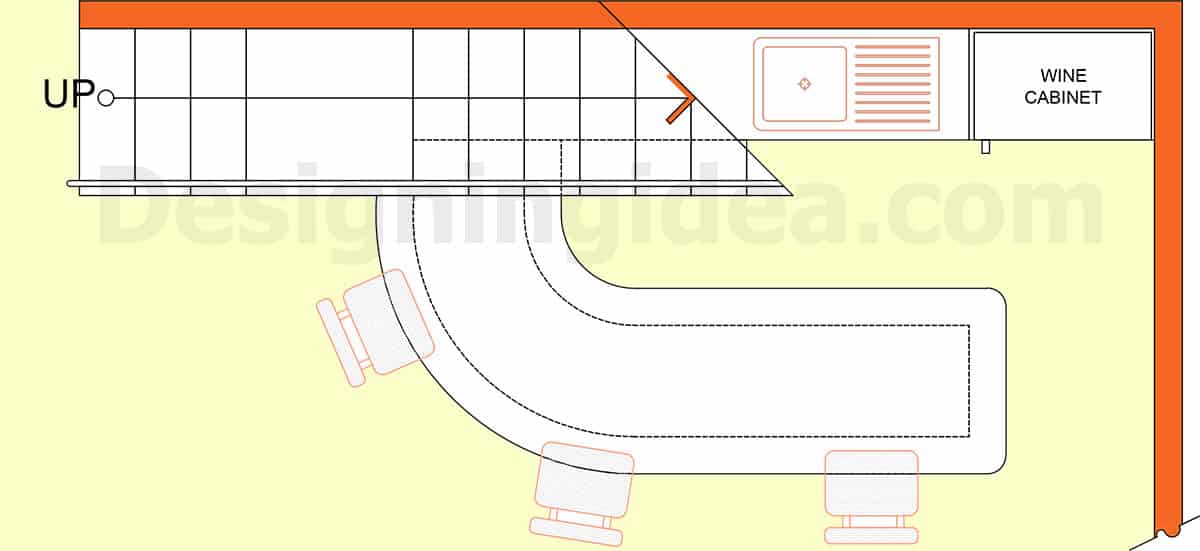
Seating Capacity: Each seat typically requires about 24 inches (2 feet) of space.
Features:
-
- Option to add sliding doors, removable walls, or accordion doors to control privacy. These partitions can be left closed or open depending on your use of your under-the-stairs bar.
- An under-the-stairs bar makes it convenient for guests in the basement area, as they won’t need to go up to get food or beverages.
Limitations:
- Can look out of place if not properly designed.
- Cabinets and counters are most likely customized to fit the unique profile of the area under the stairs.
Living Room Corner Bar
Fits into a corner of the living or family room; can be built-in or use freestanding furniture; creates a dedicated entertainment zone.
A creative way to fill in expansive living rooms is by assigning a corner bar. The living room corner bar is essentially an area where you can store, prepare, and serve beverages, either alcoholic or non-alcoholic. A kitchen with smaller elements, such as a mini fridge and mini sink, can also be incorporated along the counter spaces.
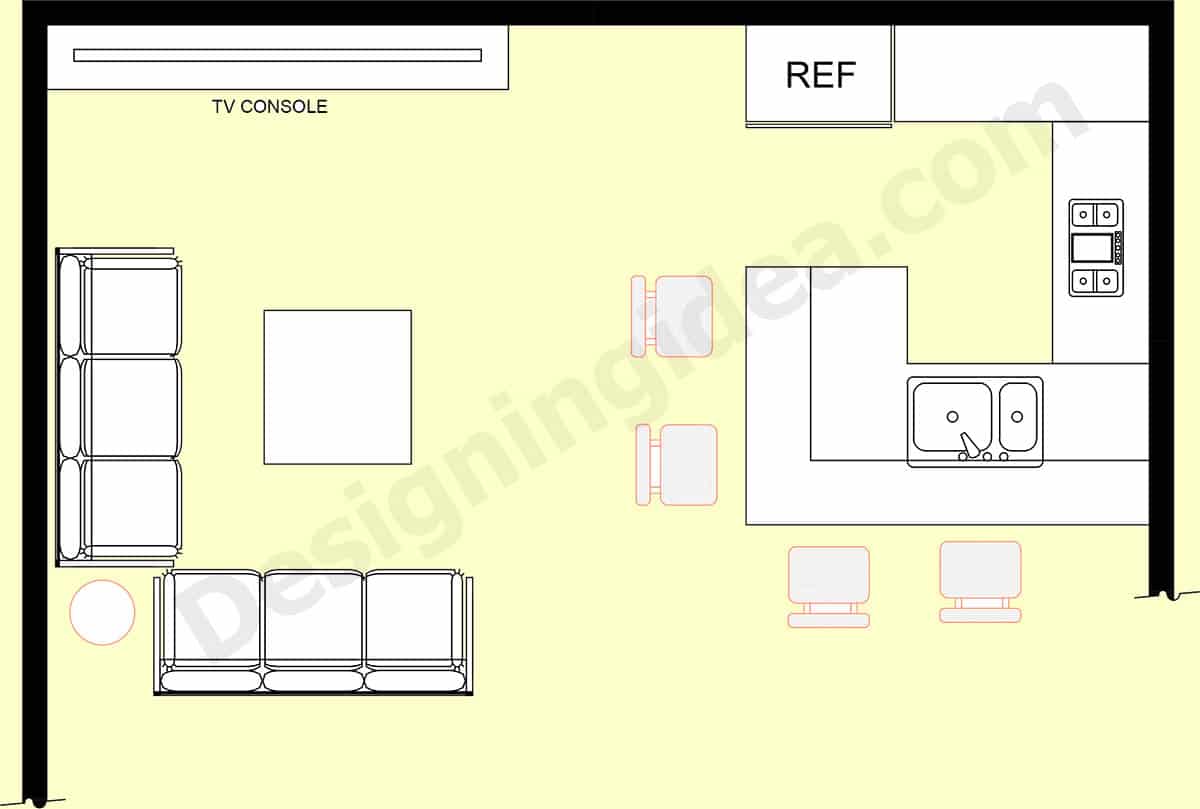
Seating Capacity: Each seat typically requires about 24 inches (2 feet) of space.
Features:
- Since it is an add-on feature and seldom assigned as the focal point in a living room, corner bars don’t require a large area.
- Island, angled, round, or an L-shaped bar counter are popular options for living rooms with corner bars.
- For a more modern design, add a straight bar with a backdrop of a small counter with a sink encased with a built-in floor-to-ceiling cabinet.
- Stand-alone corner wine cabinets with a straight counter can be an option if you don’t want to do any major renovations.
- However, you’ll still need to add and rewire if you have additional or integrated appliances, as well as additional plumbing work for built-in sinks.
- For living rooms that have 8 feet or more, a drop ceiling with a pendant or recessed lights can elevate your entertainment section. This also marks or defines the space and creates a cozy air for your home bar.
Limitations:
- The theme, which includes the materials, colors, and design features, should blend in with the existing living room motif.
Do you want to have a custom design created for your home? Contact us to have one of our designers create a customized floor plan solution for your home.


